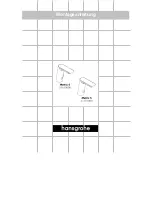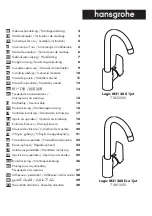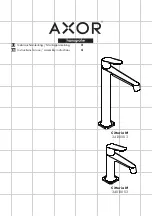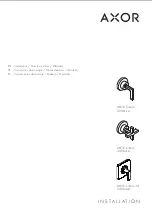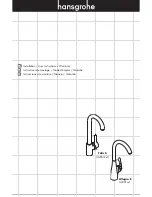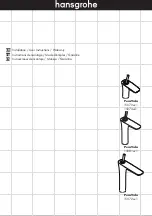
9
Fixing Screws
Inlet Nut
Hot Inlet
Cold Inlet
Olive
Filter
Large boss
must
be
fitted at the bottom
6.
For solid walls drill the fixing holes for the
backplate with a 6 mm drill and insert the
wall plugs (supplied). For other types of wall
structure alternative fixings may be required
(not supplied).
7.
Drill the holes for the supply pipes and fit the
supply pipework:
Cold to Top Inlet, Hot to Bottom Inlet
Note!
The inlet pipework should extend
between 12 and 18 mm from the finished wall
surface.
Caution!
Make sure that the pipework is not
damaged otherwise the olives will not seal.
8.
Fit the backplate over the inlet pipes and
secure to the wall using the fixing screws
(supplied).
9. Caution! It is essential at this point
that the supply pipework is thoroughly
flushed through before connection to the
mixer.
Failure to do so may result in product
malfunction and will not be covered under the
guarantee.
10.
Fit the olives onto the inlet pipework and
tighten the inlet nuts using a suitable spanner.
Caution!
Do not overtighten.
Important!
Make sure that the inlet filters are
fitted in the inlet nuts as illustrated.
11.
Make sure that the concealing plate (with
the hole at the bottom) is loosely fitted over
the mixing valve inlets and align the mixer
with the inlet nuts. Push on fully and tighten
the grubscrews to secure the mixer to the
backplate. Make sure that the grubscrews are
engaged fully in the valve body grooves.
Inlet Filters
Concealing Plate
12.
Push the concealing plate onto the backplate,
secure with the M4 x 12 mm grubscrew.
Single grubscrew secures
the top inlet to the backplate
Two grubscrews secure both the
bottom inlet and the concealing
plate to the backplate





















